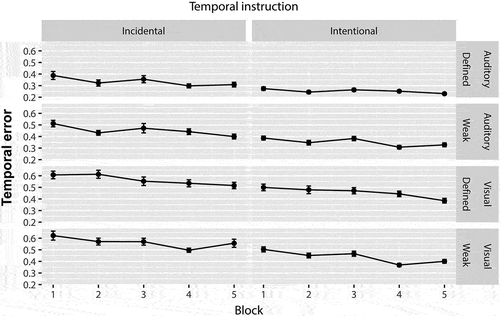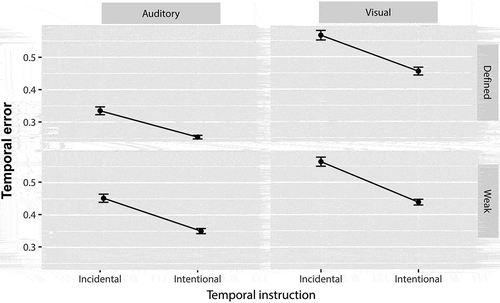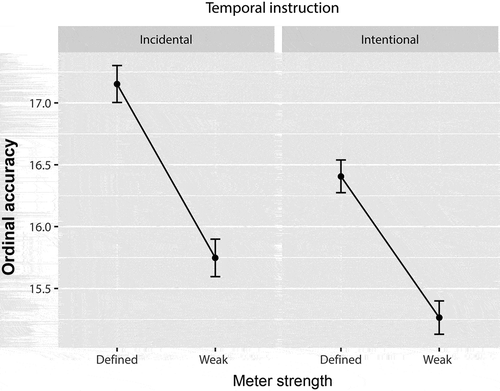Figures & data
Figure 1. Sequences for serial recall. (A) The two temporal structures used in defined meter vs. weak-meter conditions (short vertical lines = beat onsets; crosses = sequence events). Arrows indicate an example of concurrent ordinal information. (B) Ordinal structures were random series of nine tones, high or low, in the auditory conditions, nine spatial positions, up or down, in the visual ones. In both cases, participants used the arrow up/down keys of the keyboard to reproduce the sequence

Table 1. Design of the experiment
Table 2. Predictors of temporal error
Table 3. Predictors of ordinal accuracy
Figure 2. Mean temporal error across block (1–5), temporal instruction (incidental vs. intentional learning), modality (auditory vs. visual) and meter-strength levels (defined vs. weak). Vertical bars represent the standard error of the mean. Temporal performance improved across blocks regardless of temporal instruction, modality, or meter strength

Figure 3. Mean temporal error across temporal instruction (incidental vs. intentional learning), meter strength (defined vs. weak) and modality. Vertical bars represent the standard error of the mean. There were no meter-strength effects. Modality had an effect on beat processing (main effect on temporal performance), but not on meter processing (no interaction with meter-strength effects)

Figure 4. Mean ordinal accuracy across temporal instruction (incidental vs. intentional learning) and meter strength (defined vs. weak). Vertical bars represent the standard error of the mean. Meter strength enhanced ordinal learning


